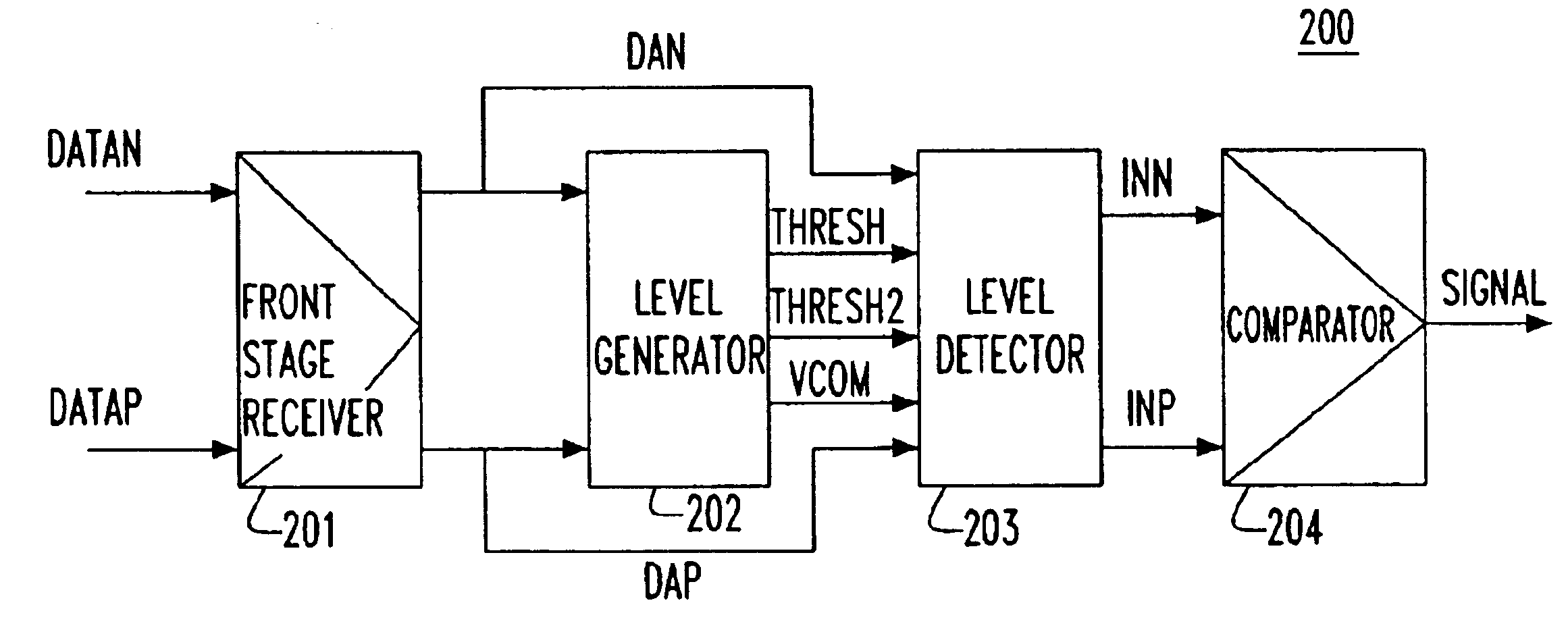Apparatus and method for detecting loss of high-speed signal
a high-speed signal and apparatus technology, applied in the field of data communication, can solve the problems of invalid or unreliable input of the receiver, waste of resources and time, and inability to detect the loss of the signal,
- Summary
- Abstract
- Description
- Claims
- Application Information
AI Technical Summary
Benefits of technology
Problems solved by technology
Method used
Image
Examples
Embodiment Construction
[0029]FIG. 1A is a block and schematic diagram illustrating interconnection and use of a signal detector 26 according to an embodiment of the invention. As shown in FIG. 1A, a high speed serial signal is input to a receiving end 10 of a serial link as a difference signal between the voltages on a pair of differential signal lines (conductors) DN and DP. The differential signal on the pair of differential signal lines DN and DP is amplified to a predetermined reception level by an automatic gain controlled amplifier (AGC) 25. Thereafter, the output of the AGC 25 is input to a receiver complex 28 via lines 20 and 21, where the amplified signal is then quantized and sampled with a clock recovered from the input signal to capture the data carried by the signal.
[0030]The input signal on the pair of differential signal lines DN and DP is also input to a signal detector 26, which provides an output SIG_DET to logic block 29 to signal the presence or absence of the differential input signal...
PUM
 Login to View More
Login to View More Abstract
Description
Claims
Application Information
 Login to View More
Login to View More - R&D
- Intellectual Property
- Life Sciences
- Materials
- Tech Scout
- Unparalleled Data Quality
- Higher Quality Content
- 60% Fewer Hallucinations
Browse by: Latest US Patents, China's latest patents, Technical Efficacy Thesaurus, Application Domain, Technology Topic, Popular Technical Reports.
© 2025 PatSnap. All rights reserved.Legal|Privacy policy|Modern Slavery Act Transparency Statement|Sitemap|About US| Contact US: help@patsnap.com



